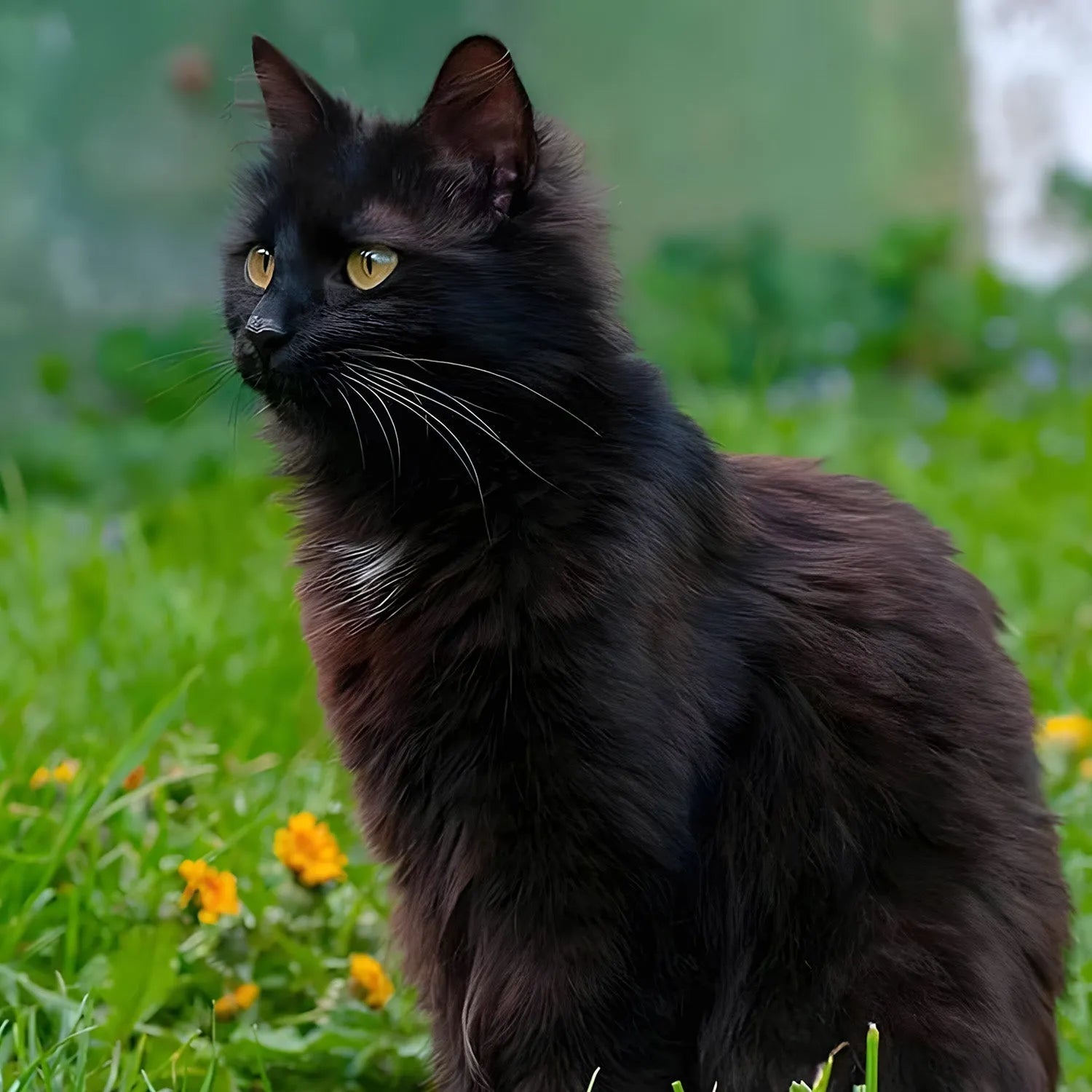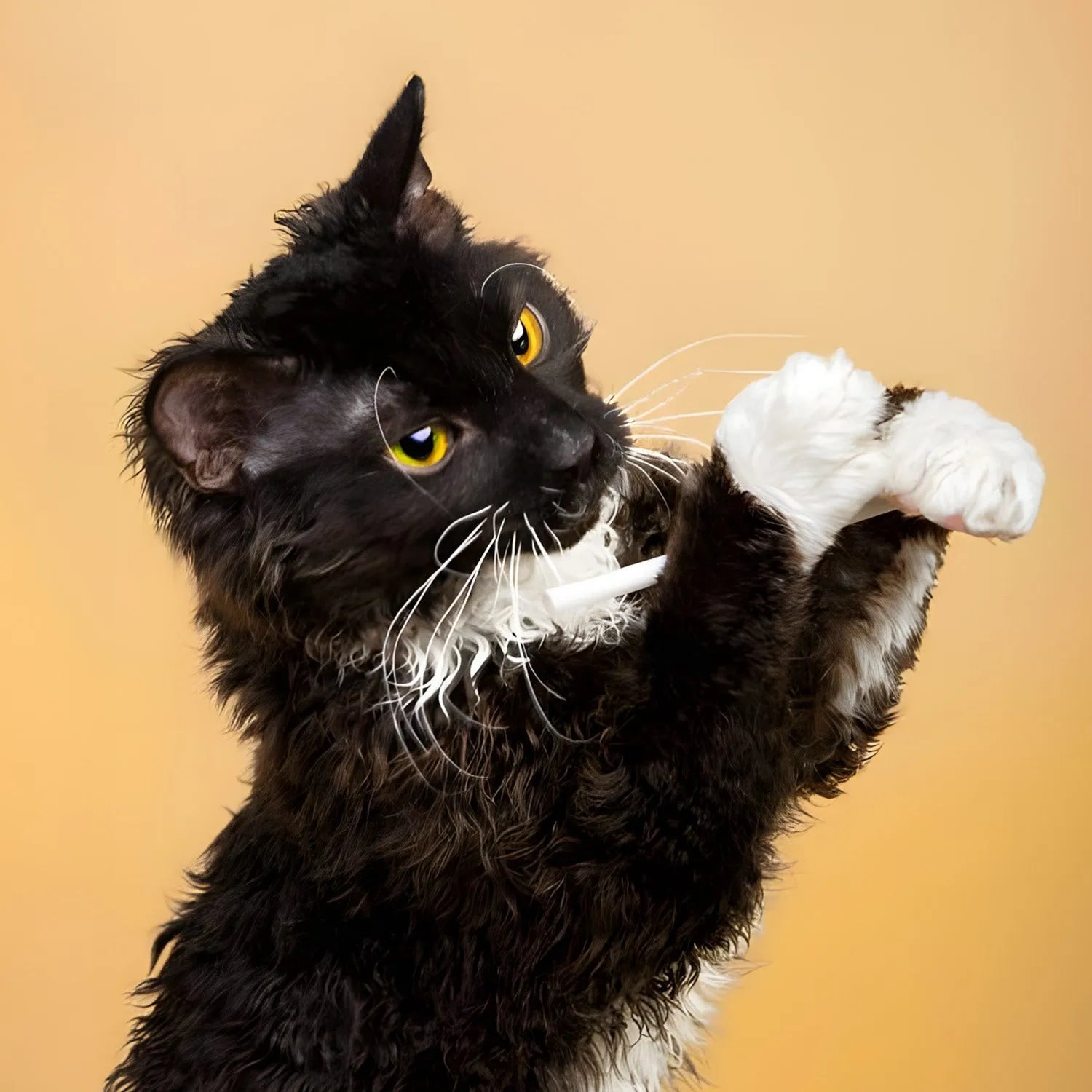Balinese: The Elegant and Talkative Feline
Introduction
The Balinese cat is a stunningly elegant breed, often described as a long-haired version of the Siamese. With its silky coat, striking blue eyes, and playful nature, the Balinese is a favorite among cat enthusiasts. This breed is known not only for its beauty but also for its affectionate and talkative personality, making it a delightful companion for those who appreciate a cat that loves to interact. In this blog, we’ll explore the Balinese cat’s lifestyle, behavior, grooming needs, trainability, and how it interacts with humans and other pets.
Ratings (1-5)
-
Environmental Adaptability: 4
-
Food Consumption: 3
-
Need for Companionship: 5
-
Trainability: 5
-
Tolerance of Children: 4
-
Ease of Domestication: 4
History and Origins
The Balinese cat breed has its origins in the United States, where it first appeared as a natural mutation of the Siamese cat. In the 1940s and 1950s, breeders noticed that some Siamese kittens were born with longer fur, a trait that was initially considered a flaw. However, these long-haired kittens were so beautiful and had such pleasant temperaments that breeders began to selectively breed them. The breed was officially named "Balinese" due to its graceful appearance, reminiscent of Balinese dancers. Despite being relatively new, the Balinese has gained a dedicated following due to its unique combination of beauty and personality.
Physical Characteristics and Colors
The Balinese is a medium-sized cat with a sleek, graceful build. It has a long, tubular body, with fine bones and a graceful appearance. One of the most striking features of the Balinese is its silky, medium-length coat, which lies close to the body and is free from the undercoat found in other long-haired breeds. This gives the Balinese a sleek and elegant appearance without the bulk of other long-haired cats. The Balinese's coat comes in the same color points as the Siamese, including seal, blue, chocolate, and lilac. The breed’s large, almond-shaped eyes are a vivid blue, adding to its overall striking appearance.
Lifestyle and Behavior
Balinese cats are known for their playful, affectionate, and highly social nature. They are often described as being "dog-like" in their loyalty and desire to be with their human companions. This breed thrives on interaction and is not shy about vocalizing its needs and desires. Balinese cats are very talkative, often engaging in long "conversations" with their owners, similar to the Siamese. They are also highly active and enjoy playtime, whether it's chasing toys, climbing, or simply exploring their environment. Despite their high energy, Balinese cats are also known to be quite affectionate and will happily curl up on their owner's lap for a nap.
Trainability and Intelligence
Balinese cats are highly intelligent and can be easily trained to perform a variety of tricks and commands. They are quick learners and respond well to positive reinforcement techniques such as treats, praise, and play. Balinese cats enjoy mental challenges, making them adept at learning new things, whether it's fetching, sitting on command, or even walking on a leash. Their intelligence also makes them highly adaptable to changes in their environment, and they often enjoy learning new routines or exploring new spaces.
Social Behavior and Human Interaction
Balinese cats are extremely social and form strong bonds with their human families. They are known for their affectionate nature and enjoy being involved in every aspect of their owner's life. This breed is often happiest when it is in the company of its human companions, and it will follow its owners from room to room, often chatting along the way. Balinese cats are particularly known for their strong need for companionship, and they can become lonely if left alone for long periods. They thrive in homes where someone is usually around to keep them company.
Compatibility with Children and Other Pets
Balinese cats are excellent companions for children. Their playful and gentle nature makes them a great match for families. They enjoy interactive play and are generally tolerant of children's antics, provided they are treated with respect. Additionally, Balinese cats tend to get along well with other pets, including dogs, as long as they are properly introduced. Their sociable and adaptable nature allows them to integrate well into multi-pet households, and they often enjoy the company of other animals as much as they do humans.
Grooming and Care
Despite their long, silky coat, Balinese cats are relatively low-maintenance when it comes to grooming. Their coat does not mat easily and only requires weekly brushing to keep it looking its best. Regular grooming helps to remove loose hairs and reduce shedding. In addition to coat care, regular dental care, ear cleaning, and nail trimming are important to maintain their overall health. Bathing is not usually necessary unless the cat gets particularly dirty, as Balinese cats are generally good at keeping themselves clean.
Health and Lifespan
Balinese cats are generally healthy with no specific genetic disorders associated with the breed. However, like their Siamese relatives, they can be prone to certain conditions such as dental issues and respiratory problems due to their slender build and long face. Regular veterinary check-ups and a balanced diet are essential to maintain their health. With proper care, Balinese cats can live up to 15 years or more. Their robust health and relatively low maintenance make them a good choice for cat lovers who want an active and affectionate pet.
Environmental Adaptability
Balinese cats are adaptable and can thrive in various living environments, although they are particularly well-suited to indoor living. They are known for their resilience and can adjust well to different climates and household settings. Whether in an apartment or a house, Balinese cats will find ways to entertain themselves and stay active. However, they do best in environments where they can receive plenty of attention and interaction from their owners. Their adaptable nature makes them well-suited to a wide range of living conditions, and they are equally comfortable as indoor cats.
Feeding Requirements
A balanced diet is crucial for maintaining the Balinese cat's health and energy levels. High-quality cat food that is rich in protein is recommended. Fresh water should always be available. Consult your veterinarian for specific dietary recommendations based on your cat's age, weight, and health needs. Monitoring their diet to prevent obesity is essential, as Balinese cats can be prone to overeating if not properly managed.
Conclusion
The Balinese is a graceful and affectionate breed that brings beauty and companionship to any household. Their intelligence, playful nature, and strong desire for interaction make them wonderful pets for families and individuals alike. If you're looking for a cat that combines elegance with a loving and sociable personality, the Balinese might be the perfect fit for you.
For more information about other cat breeds and pet care tips, stay tuned to our blog!
References:
-
Taylor, J. (2021). "The Development and Characteristics of the Balinese Cat." *Journal of Feline Studies*, 35(3), 201-215.
-
Richards, A. (2020). "Caring for Your Balinese Cat: A Comprehensive Guide." *Cat Lover's Magazine*, July issue, pp. 30-40.
-
Lee, M. (2019). "Health and Wellness in Balinese Cats." *Veterinary Journal*, 79(2), 123-137.


